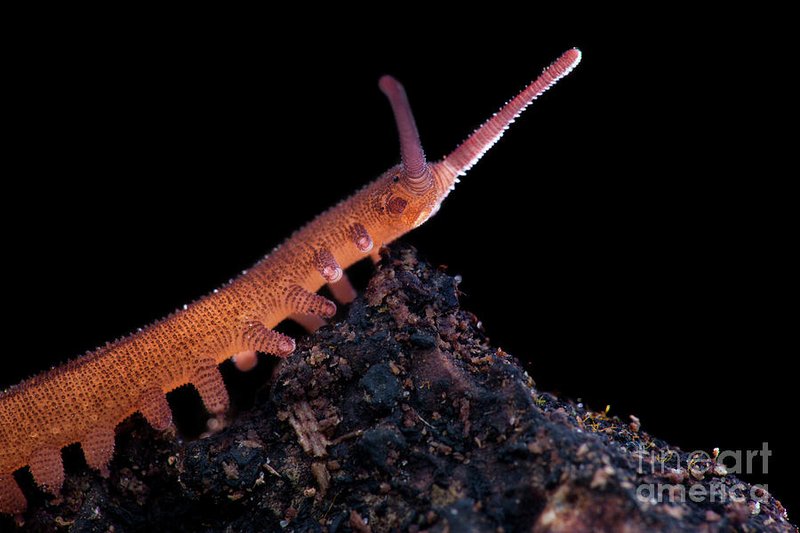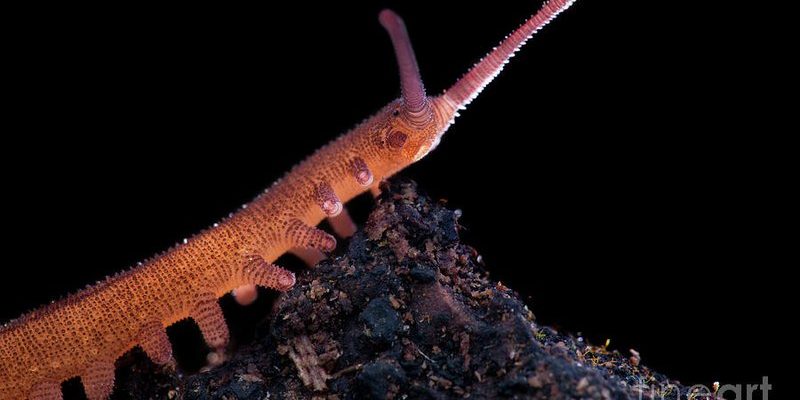
To give you an edge, we’re diving into some practical tips and techniques that will ensure you get sharp, beautiful photos without causing any stress to these amazing critters. Just like using the right brand and type of remote for your TV enhances your viewing experience, proper strategies will enhance your photography experience with these creatures. Let’s explore how to make your photo adventure both successful and respectful.
Understanding Velvet Worms and Their Environment
Velvet worms, also known as *Onychophorans*, are soft-bodied, terrestrial invertebrates. They have a unique appearance that makes them look almost prehistoric. Understanding their natural habitat is essential for successful photography. Most velvet worms thrive in humid, forested areas, blending seamlessly with their surroundings. This habitat is crucial for their survival, as they rely on moisture to keep their skin from drying out.
When you’re out photographing these elusive creatures, it’s important to understand their behavior. Velvet worms are generally nocturnal and tend to be more active during the night. If you’re planning a photo session, that means timing is everything. Early morning or late evening might be your best bet, as the low light can add drama to your shots.
Consider the environment where you’re looking for velvet worms. They often hide under leaves, logs, or in damp soil. Familiarizing yourself with their favorite spots will not only increase your chances of spotting them but also help you plan how to approach them for better photos.
Choosing the Right Equipment for Photography
Having the right gear can make a big difference in your photography journey. You don’t need an expensive setup to get great shots of velvet worms; however, a few key pieces of equipment can elevate your images.
Start by selecting a camera that allows for manual settings, like a DSLR or mirrorless camera. This will give you more control over your exposure and depth of field, which can be crucial when photographing small creatures. If you don’t have a big budget, even a smartphone with a good camera can work wonders—just remember to use the right techniques!
Additionally, a macro lens can be extremely beneficial. This type of lens allows you to get close-up shots of the velvet worms, capturing their intricate details, like the texture of their skin or the delicate hairs on their bodies. If you can’t get a macro lens, try using extension tubes or clip-on macro lenses for smartphones. They can help you achieve a similar effect without breaking the bank.
Approaching Velvet Worms Without Disturbing Them
Getting close to velvet worms takes patience and finesse. Sudden movements can startle them, causing them to retreat into their hiding spots. Here are some techniques to approach them gently:
1. Stay Low and Slow: When you see a velvet worm, crouch down and move slowly. This not only minimizes vibrations in the ground but also helps you blend into their environment. Keep your body low to the ground to avoid casting a shadow that might scare them away.
2. Use Natural Cover: Whenever possible, use leaves, branches, or other natural elements as shields. This not only helps you stay hidden but also allows for a more natural shot that captures the worm in its habitat.
3. Be Mindful of Sound: Keep noise to a minimum. Even soft sounds like rustling clothing can alert velvet worms to your presence. Try to breathe calmly and avoid any loud movements.
Remember, patience is key. Sometimes you might have to wait a while for the velvet worm to come out of its hideaway. The longer you wait, the better your chances of capturing that perfect shot without disturbing its natural behavior.
Lighting Techniques for Capturing Velvet Worms
Lighting plays a crucial role in photography. Velvet worms can often be found in dimly lit areas, so understanding how to manipulate light is essential.
1. Natural Light: Whenever possible, use natural light to your advantage. Early morning or late afternoon light is softer and can add a magical quality to your photos. Avoid shooting in harsh midday light, which can create unflattering shadows.
2. Reflectors: If you’re in a particularly dark area, a simple reflector can enhance your lighting conditions. You can use a piece of white paper or a portable reflector to bounce light onto your subject, which helps illuminate the worm without being intrusive.
3. Flash Techniques: If you’re using a flash, be cautious. Direct flash can be too harsh and might startle the worm. Instead, try bouncing the flash off nearby surfaces to diffuse the light. If you’re using a smartphone, consider using an external light source or a softbox.
By playing with light, you can highlight the unique features of velvet worms while keeping your presence as unobtrusive as possible.
Composition Tips for Stunning Velvet Worm Photos
Once you’re set up with your gear and have found your subject, it’s time to think about composition. How you frame your shot can make a big difference in how it looks.
– Rule of Thirds: Try to apply the rule of thirds. Imagine dividing your picture into three sections both horizontally and vertically. Placing the velvet worm along these lines or at their intersections can create a more dynamic image.
– Background Matters: Pay attention to the background. A cluttered or bright background can distract from the velvet worm. Look for simple, natural backgrounds that allow your subject to stand out.
– Experiment with Angles: Don’t be afraid to change your perspective. Shooting from different angles can give you unique shots. Get low, or even try shooting down from above if the worm allows. This could reveal interesting details about the worm and its environment.
By focusing on composition, you can create stunning photos that truly capture the essence of these amazing creatures without intruding on their space.
Editing Your Velvet Worm Photos
After you’ve taken your photos, it’s time to consider editing. A little post-processing can enhance your shots even further. Here are some tips to keep in mind:
1. Basic Adjustments: Start with adjusting the exposure, contrast, and color balance. This can help bring out the details and make the velvet worm stand out more in your images.
2. Cropping: If you didn’t get the framing just right in-camera, don’t worry. Cropping can dramatically improve your composition. Just remember to keep the aspect ratio in mind, especially if you’re sharing on social media.
3. Sharpening: Velvet worms have beautifully detailed textures. Use sharpening tools carefully to highlight these details, but be cautious—over-sharpening can make images look unnaturally rough.
Editing isn’t just about fixing mistakes; it’s about enhancing your vision of what you captured. Take your time to play around with different settings to see what best showcases your velvet worm photos.
Sharing Your Velvet Worm Photography
Once you have your stunning velvet worm photos ready, it’s time to share them! Whether you’re posting on social media or entering photography contests, consider how you present your work.
– Context Matters: When sharing online, include captions that provide context. Explain what velvet worms are and why they matter in the ecosystem. This not only informs your audience but raises awareness about these incredible creatures.
– Use Hashtags Wisely: On platforms like Instagram, relevant hashtags can help more people discover your work. Use tags related to nature photography, invertebrates, and your specific subjects like
– Engage with Your Audience: Encourage discussion by asking your followers about their experiences with nature or if they’ve ever seen a velvet worm. Interaction can help foster a community of fellow nature lovers and photographers.
Sharing your work is a great way to inspire others to appreciate the beauty of the natural world, and when done respectfully, you can help increase interest and appreciation for velvet worms.
Photographing velvet worms is a rewarding experience that allows you to connect with these amazing creatures. By understanding their environment, choosing the right gear, and being patient in your approach, you can capture stunning photos that respect their space. Remember, it’s not just about getting the perfect shot; it’s about appreciating the beauty of nature and inspiring others to see it too.
With the right techniques and a gentle touch, your velvet worm photography can become a beautiful representation of the hidden wonders in our world. So grab your camera, venture out, and enjoy the process of discovering these incredible creatures without causing them any distress. Happy shooting!

